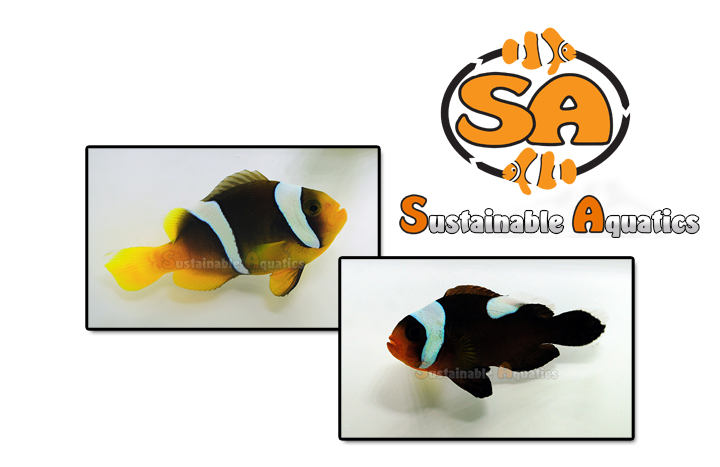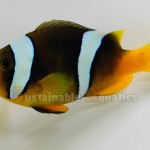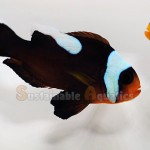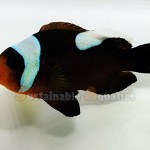We always are excited about learning about new species that are captive-bred and we just learned about two new species of tank-bred clownfish Sustainable Aquatics has added this week — the Brown Saddleback Clownfish (Amphiprion polymnus) and the Sebae Clownfish (Amphiprion sebae). These two larger, and often considered delicate, species of clownfish are hardy fish to add to your tank coming from an operation like Sustainable Aquatics.
Here is what Sustainable Aquatics has to say about these new specimens:
The Saddleback Clownfish is among the larger clownfish species, growing to an adult length of almost five inches. The name “Saddleback” comes from the wide, partial center bar, which can sometimes resemble a saddle. Saddleback clowns commonly move with an “up-and-down” swimming motion that is entertaining to observe in the aquarium. Though not required for successful aquarium care, they are known to associate with the Sebae anemone (Heteractis crispa) and the Haddoni carpet anemone (Stichodactyla haddoni). Saddleback clownfish are not picky feeders, but they should be offered a variety of feeds, as they are almost always hungry! Saddleback clowns are often found in groups in the ocean, and many have had success maintaining a group of these fish in the aquarium.
The Sebae Clownfish is another large species of clown naturally found in the Indian Ocean around India, Sri Lanka, and the Maldives. They are an excellent choice for hobbyists looking for a unique and colorful clownfish. SA’s Sebae clownfish have a bright yellow base coloration with a dark brown to black back that extends from the eye to the base of the tail. This coloration is contrasted by their two bold, bright white bands. These fish are often confused with the more common Clarkii Clownfish but can be distinguished due to the Clarkii typically having three bands and a less elongated body shape. In the ocean, the Sebae Clown it can be found associating with the carpet anemone species Stichodactyla haddoni. In captivity these clowns will often take-up residence in a variety of anemones such as Sebae anemones and bubble tip anemones. SA’s Sebae Clowns are extremely hardy and will accept most prepared food including frozen, pellets, and flakes.
For both of these species, we recommend feeding them a diverse diet including our SA Hatchery Diet to ensure a smooth transition from the hatchery to the home aquarium and to maintain their color and healthy growth. Since these are larger clownfish varieties, we would suggest aquariums of at least 30 gallons with plenty of live rock to accommodate their larger adult sizes.
These new species are available now so make sure to bug your favorite LFS or online livestock dealer to grab ahold of some of these beauties for you and share lots of pictures.








